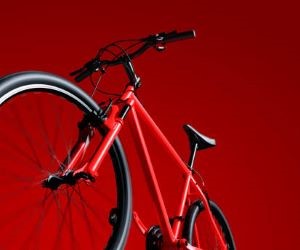Learn how to deal with punctures on long rides with prevention tips, repair techniques, and smart gear choices to keep rolling without stress.
HOW DO I PREPARE FOR MY FIRST CYCLING SPORTIVE?
Preparing for your first cycling sportive can be daunting, but with structured training, proper equipment, and smart nutrition, you can approach your event with confidence. This guide offers step-by-step advice on building endurance, selecting the right gear, and planning race-day strategies to ensure an enjoyable and successful experience.

Essential training strategies
Proper training is the backbone of any successful sportive. Before even thinking about race day, you need a structured plan that gradually builds your stamina, strength, and cycling technique.
Building a training schedule
Start by assessing your current fitness level. Beginners should aim for 3–4 rides per week, gradually increasing duration and intensity. Include a mix of short, high-intensity rides and longer endurance sessions. Consistency is key—missing sessions can hinder progress.
Begin with rides of 30–45 minutes, increasing by 10% each week.
Include interval training to boost speed and cardiovascular fitness.
Schedule one long ride per week to simulate sportive distance.
Incorporate rest days to prevent overtraining and injury.
Strength training is also essential. Focus on core exercises, squats, lunges, and upper body work to support long rides and improve bike handling. Cross-training with swimming or running can maintain overall fitness while reducing cycling monotony.
Choosing the right gear
Your equipment can make or break your sportive experience. Comfort, efficiency, and safety should be your top priorities when selecting your gear.
Bike selection and fit
Opt for a road bike that matches your body dimensions and riding style. A professional bike fit ensures proper posture, reduces fatigue, and prevents injuries. Check saddle height, handlebar position, and pedal alignment carefully.
Choose a lightweight bike for easier climbing and acceleration.
Consider clipless pedals for improved power transfer.
Ensure brakes and gears are well-maintained before the event.
Test your bike on training rides to adjust comfort and handling.
Apparel and accessories
Proper clothing enhances comfort and reduces the risk of chafing. Padded cycling shorts, breathable jerseys, and weather-appropriate layers are essential. Don’t forget gloves, sunglasses, and a helmet for protection.
Use moisture-wicking fabrics to stay dry and prevent rashes.
Wear a properly fitted helmet at all times.
Carry essential tools and spare tubes for minor repairs.
Invest in cycling shoes with proper cleats if using clipless pedals.
Nutrition and hydration planning
Fueling your body is critical for performance and endurance. A poor nutrition strategy can lead to fatigue, cramps, and a difficult race day.
Training nutrition
During training, experiment with different foods to determine what works best for your stomach. Focus on a balanced diet rich in carbohydrates for energy, protein for muscle recovery, and healthy fats for endurance.
Eat complex carbs like oats, rice, and sweet potatoes before long rides.
Incorporate lean protein sources such as chicken, fish, or tofu post-ride.
Use energy gels, bars, or bananas during rides for sustained fuel.
Stay hydrated with water and electrolyte drinks to replace lost minerals.
Race-day nutrition
On race day, stick to familiar foods to avoid digestive issues. Eat a carbohydrate-rich breakfast 2–3 hours before the start. During the ride, consume small amounts frequently to maintain energy levels and prevent bonking.
Carry water bottles and refill at aid stations.
Use mid-ride snacks every 45–60 minutes.
Avoid trying new supplements or foods on race day.
Post-ride recovery
After finishing, focus on rehydration and protein intake to support muscle repair. Stretching and light walking can prevent stiffness and accelerate recovery.
YOU MAY ALSO BE INTERESTED






